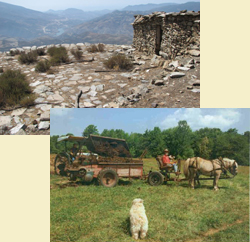Core Papers
Here are a set of papers on the subject of systems thinking learning and design tools for sustainability.
The central premise for navigating the future, and for the writing on this site.
An introduction to systems thinking and one of its tools. Systems or ‘big picture’ thinking is essential for understanding and navigating our systemic world. It is an antidote for the dominant reductionist approach to understanding that, by looking at problems out of context, creates solutions that ultimately backfire.
- Illustrations and Challenges of Progress toward Sustainability: The Northland Sheep Dairy Experience
An assessment based on an explicit understanding of sustainability and the principles and attributes derived from it.
An analysis based on a view of the political economy of capitalism.
Places a Kuhnian revolution in science in its historical and social context, and outlines an example in the field of agriculture.
First in a series that describes a vision of relocalized food production designed to feed Tompkins County, New York in the post-petroleum age.
Addresses general problem areas in the design of a relocalized county food production system: fertility, water, pest control, energy and species diversity.
Pictures the future county food system as a whole: its historical context and implications, and interdependencies among the parts that will make them most effective as an integrated system.
Considers the needs and resources that will shape the design of urban agriculture systems in the city of Ithaca, and offers a case study as a design example.
Considers the needs and resources that will shape the design of peri-urban agriculture systems around the city of Ithaca, and offers a case study as a design example.
Consider the needs and resources that will shape the design of future agrarian communities sharing a symbiotic relationship with the city of Ithaca and will offer a case study as a design example.
A proposal for a revolution in agricultural science in higher education.
A trial of a sustainability assessment tool on Northland Sheep Dairy. If we want to design lasting solutions, we need ways to evaluate their sustainability.
A paper that contains my seminal ideas on sustainable farm design and their application to Northland Sheep Dairy.
Current interest in “green design” tends to run to solar and wind electric technologies
that replicate the push-button convenience that our society is used to but are very
inefficient ways to heat a building. This approach bestows a certain social status but is so expensive that it is not a model likely to gain widespread adoption in an industrial
economy now headed into long-term decline. Area developers sometimes promote “green materials” that may also confer status but rarely save as much of the planet as simple construction designs that dramatically reduce residential energy use.
Human consumption of planetary resources is now coming up against hard physical resource limits, with the following implications for home heating: 1) All fossil fuels will gradually become too scarce to be affordable for heating1; 2) As human society returns to reliance on biomass energy for many purposes, wood and other forms of biomass will become scarcer as well; 3) Unlike direct heat from the sun or biomass burning, other sources including “alternatives” like wind or solar electric heating require technologies that are expensive and energy conversions that waste energy, which makes them too costly for most people; 4) As fossil energy becomes more scarce, economies that currently can produce resource-intensive alternatives will no longer have the industrial capacity to provide these technologies at the necessary scale. The only answer is to use lower cost technologies.
